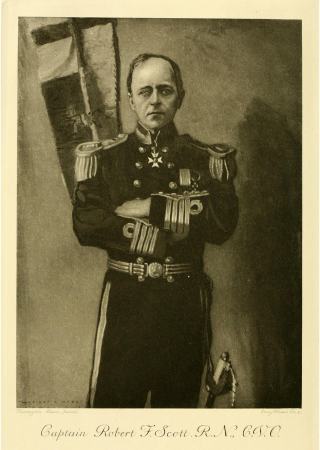Scott’s South Pole Expeditions
- ... Scott reached the South Pole a month after Amundsen?
- ... if the British expedition had not met with misfortune, the two expeditions might have met at the pole?
- ... it soon became apparent that the ponies, which Scott preferred over dogs, suffered from the cold and from fine snow, which penetrated deeply into their shaggy pelts?
- ... all the ponies in Scott's expedition eventually died, and the men had to haul the heavily laden sleds by themselves?
- ... motorized sleds began to fail after only 60 kilometers?
- ... near the bodies of the British expedition, there was a bag with 15 kilograms of rocks from the top edge of the Beardmore Glacier, which the polar expedition carried, as laboratory specimens, to the very last?
- ... Scott undertook five expeditions to the Antarctic?
- ... the scientific research station in the Antarctic is named after Scott?
- Scott's expedition sailed to the Antarctic in the ship Terra Nova.
- Scott had 19 ponies, 30 dogs and three motorized sleds.
- At a distance of 200 miles from the south pole, on the Antarctic plateau, Scott sent his support teams back, keeping only two sleds, and with four companions, set out on foot for the pole.
- The journey from the Bay of Whales to the South Pole took eighty days.
- They reached the South Pole on January 17th, 1912.
- The men who accompanied Scott across the Antarctic Plateau to the South Pole and died on the return trip were, Edward Wilson, Lawrence Oates, Henry Bowers and Edgar Evans.
- The assumed day of R. F. Scott's death is March 29th, 1912, the date of the last entry in his journal.
Scott set out in his ship Terra Nova on June 1st, 1910 from London for his South Pole expedition. Besides the polar party and crew, the ship carried 19 ponies, 30 dogs and three tracked vehicles. Reaching the Antarctic, they camped in the Bay of Whales and discovered that Amundsen's ship Fram was also anchored in the bay. On November 11th, 1911, Scott headed south, accompanied by support teams, and on December 22nd, the team members established their highest camp, at an elevation of 2,600 meters. January 2nd, 1912 Scott reached 3,200 meters and the level of the Antarctic Plateau. From here he sent his support teams back, kept only two sleds and with four companions, set out on foot for the South Pole. The expedition reached the pole on January 17th. There they found Amundsen's tent. The disappointment had a detrimental effect on the tired group's spirits. They unfurled the British flag near Amundsen's tent and photographed themselves, then set out on the return journey the next day. They were faced with about 1,300 kilometers across the most inhospitable terrain on the planet. On March 31st they were only 18 kilometers from the closest supply camp, but a snowstorm and gale-force winds halted their progress. Tuesday, March 29th is the last entry in Scott's journal. Not until November 12th, 1912 did a search party locate the tents with the bodies of the remaining expedition members, journals and collection of scientific samples.


